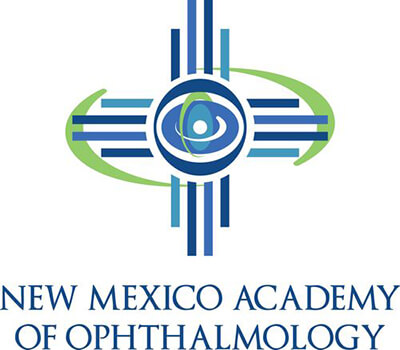Expect a new look at your eye doctor’s office

Published in the Albuquerque Journal on Tuesday, June 9th, 2020
We can’t tell you when the kids will return to school or when you can hug your grandparents, but we can say that your next trip to the ophthalmologist will be different.
That’s because ophthalmologists are devising new office procedures to prevent the spread of COVID-19.
As all 50 states begin to reopen to some degree, the New Mexico Academy of Ophthalmology and the American Academy of Ophthalmology want to share how ophthalmologists are working to protect their patients and staff.
In March, the American Academy of Ophthalmology urged ophthalmologists to immediately stop routine surgical and in-office visits to preserve protective equipment, such as masks, and to mitigate the risk of spreading COVID-19.
Although the Academy made a national recommendation to curtail routine care – based on recommendations from the Centers for Disease Control and Prevention and public health officials – the decisions to reopen more normal practice will be local and regional.
Ophthalmologists are ready with new procedures. Here is what you should expect to see:
• The clinic may ask you to wait outside, or in your car, instead of in the normal waiting room. This is to protect you, the other patients and the office staff from possible virus exposure in crowded waiting areas.
• The clinic is likely restricting the number of people who enter. If you do not need someone to be there with you, do not bring anyone to your appointment.
• Expect to see hand sanitizer when you enter the building and in the waiting room and exam rooms.
• Expect to be asked to wear a mask. You won’t be alone. The receptionists, as well as all visitors should wear a mask.
• Waiting room chairs will be spaced out to accommodate social distancing. The office may also have additional waiting rooms to prevent crowding.
• You will not see magazines or clip boards or other high-touch materials that could pass the virus.
• Cleaning will occur more frequently throughout the clinic.
• As usual, exam rooms and equipment will be thoroughly cleaned after every patient exits.
• Expect to be asked a series of questions to determine your risk profile.
• Expect someone will take your temperature, whether you are at high risk of being infected or not.
• Your eye doctor may use a special plastic breath shield on the slit lamp machine they use to look into your eyes. They may also wear a mask with a plastic shield over their eyes.
• Your doctor may ask you to wait to speak until after your eye exam is complete. Then they can talk with you and answer questions when they can be a safe distance from you.
• There is a backlog of patients who delayed care, so you may have to wait for your appointment. Also, the additional precautions required in operating rooms will likely result in fewer surgeries performed each day.
• To determine the timing of procedures, surgeons may triage patients and recommend deferral for some due to risk factors for severe COVID-19 infection, such as increased age, chronic lung disease, obesity and diabetes. Some may need to be tested for COVID-19 prior to having surgery.
“Our primary responsibility as physicians is to our patients’ safety and health,” said Dianna Seldomridge, MD, clinical spokesperson for the American Academy of Ophthalmology. “It’s the core of the medical profession. If you have questions or concerns about coming into the office, give your ophthalmologist a call. As always we will be guided by what’s best for you.”
Sean Rivera, MD, vice president of the New Mexico Academy of Ophthalmology adds it has become apparent that the threat of COVID-19 will likely persist for some time.
To keep up with the latest information for maintaining your eye health during the pandemic, visit aao.org/eye-health/coronavirus.
Also, visit the New Mexico Academy of Ophthalmology at nmao.org.
